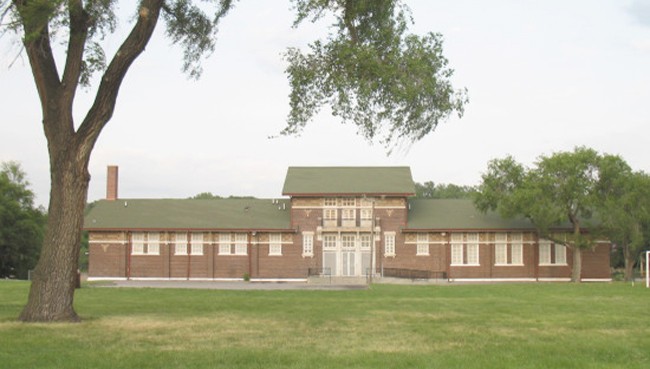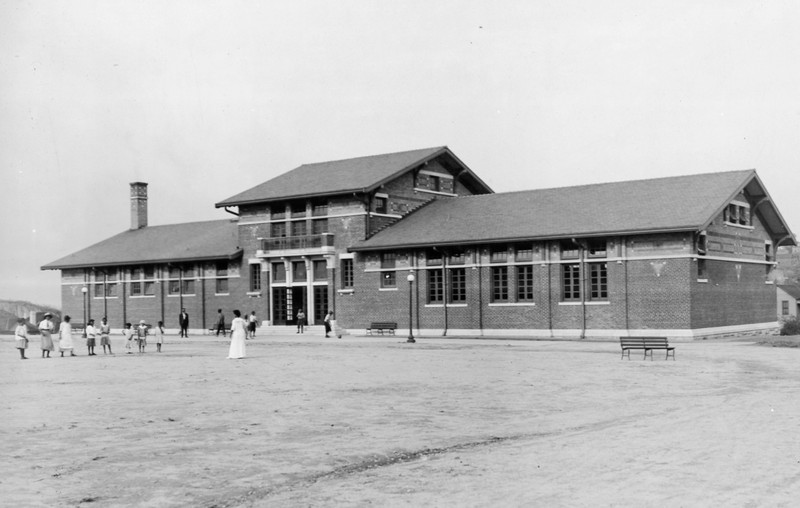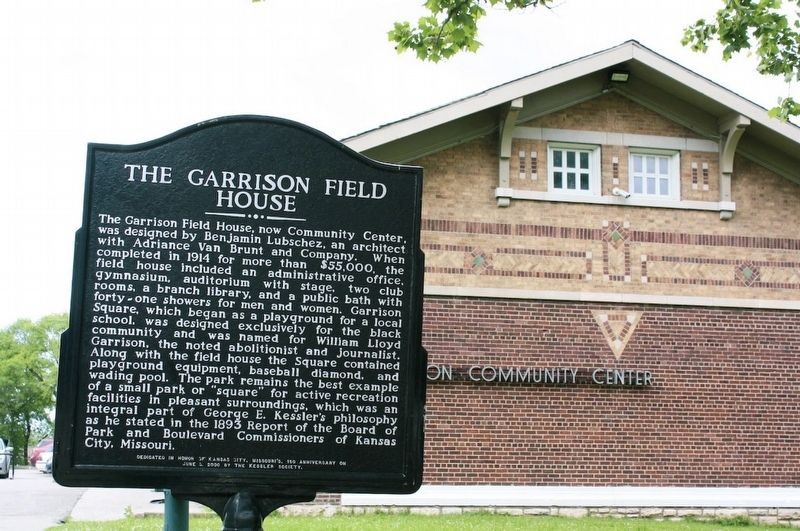Garrison Community Center (formerly Garrison Field House)
Introduction
Text-to-speech Audio
Now home to the Garrison Community Center, this Kansas City building was originally known as Garrison Field House and was built from 1913 to 1914. The early 20th century saw a growing and vibrant Black community centered around this part of the city, a reflection of residential segregation. A cornerstone of the Black community, this building was named in honor of William Lloyd Garrison, a noted white abolitionist. As a settlement center, the Garrison Field House served as a community center, featuring a gymnasium, showers, a reading room, and a branch of the Kansas City Public Libraries, as well as space for outdoor recreation. Its purpose today is largely unchanged. Today, children under 17 can use the center for free, adults enter at a lower cost, and anyone can use the building as a heating or cooling center when temperatures are especially high or low. It was noted as a historic landmark during Kansas City, Missouri's 150th anniversary in 2000.
Images
Garrison Community Center, formerly the Garrison Field House

Historical photograph of the Garrison Field House, dated December 1913

Historical marker outside of the Garrison Community Center noting its history as the Garrison Field House. This marker was dedicated in honor of Kansas City's 150th anniversary in 2000.

Backstory and Context
Text-to-speech Audio
The Garrison Park Community Center, part of the historic Columbus Park neighborhood, was initially built in 1913-14 as the Garrison Field House. The Garrison name came from William Lloyd Garrison, a white abolitionist and journalist who published a Boston newspaper through the Civil War. It was designed by Benjamin Lubschez, also known as Ben Judah Lubschez, a notable Jewish architect and photographer who immigrated here from the Russian Empire. He worked on this building while working for Adriance Van Brunt & Co. It was one of several buildings built as more black people moved into the area, with the first, the Garrison School, built in 1890 and since demolished. Black people weren't the only newcomers to the area; as earlier Jewish immigrants moved out, others moved in, especially Italian laborers and craftsmen. Later, the area welcomed Mexican and Asian immigrants. However, this building remained, for some time, the only such building in Kansas City designated for black people alone.
Belvidere Park, an unassuming plot of land that one could easily mistake for having little historical significance. However, in the early 20th century, this land was home to one of the most vibrant black communities in Kansas City. Then known as Belvidere Hollow, it was one of the more populated black communities in Kansas City. Black social clubs, businesses, and other community groups sprung up in Belvidere Hollow in the 1890s as a result. However, as the 20th century turned on, the Hollow fell into more and more decay. By the 1940s there was little left of the community. And now today Belvidere Park has been completely severed from Garrison Square park, as I-29 now runs between the two.
Although it was titled a field house, it was actually a settlement center, meaning it served a community center-like purpose for those who were lower-income. The center, a multipurpose facility, featured a gymnasium, also used as an assembly room, showers, a reading room, and the Garrison Library, a branch of the Kansas City Public Libraries. Outside, there was a playground, baseball diamond, and wading pool, as well as a "square" decorated with small greenery, in keeping with George Kessler's philosophy of beautifying outdoor recreation facilities. Today, the building serves a similar purpose to that of the Field House, being the home of the Garrison Community Center, a branch of Kansas City Parks & Recreation. Keeping with its origins as a settlement center, many of those it serves are lower-income. Children 17 and under can use the facility for free, and admission is low-cost for adults. In the summer and winter, anyone can use the building free of charge if they need to get away from especially high or low temperatures. It is also a noted historical landmark, as noted by a historical marker outside, which was dedicated in honor of the city's 150th anniversary in 2000.
Sources
Barsotti, Kate. Origins - Landmarks Commission, Columbus Park in KC. Accessed March 14th, 2024. https://thecolumbuspark.com/stories/blog-post-title-one-5322c.
Standlee, Emily. Want to explore Columbus Park? Start with this beginner's guide to the neighborhood, KCUR. June 11th, 2022. Accessed March 14th, 2024. https://www.kcur.org/arts-life/2022-06-11/explore-kansas-city-columbus-park-neighborhood-guide.
Artist Biography & Facts - Ben Judah Lubschez, Ask Art. Accessed March 14th, 2024.
Biegelsen, Sarah. Garrison Field House, Historical Marker Database. March 11th, 2024. Accessed March 14th, 2024. https://www.hmdb.org/m.asp?m=242814.
Biegelsen, Sarah. Unearth the history of Kansas City’s lost Black neighborhood, demolished for city park, Kansas City Star. April 17th, 2024. Accessed June 3rd, 2024. https://ca.news.yahoo.com/unearth-history-kansas-city-lost-110000423.html#:~:text=Belvidere%20Park%20construction%20in%201944,previously%20resided%20on%20the%20site..
KC Parks and Rec
Missouri Valley Special Collections
Historical Marker Database - photo by Sarah Biegelsen
